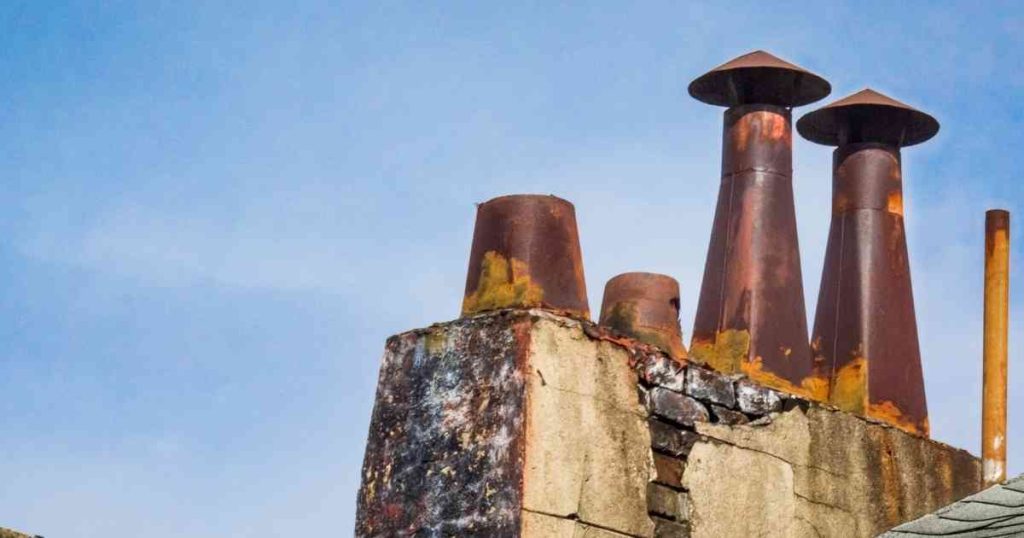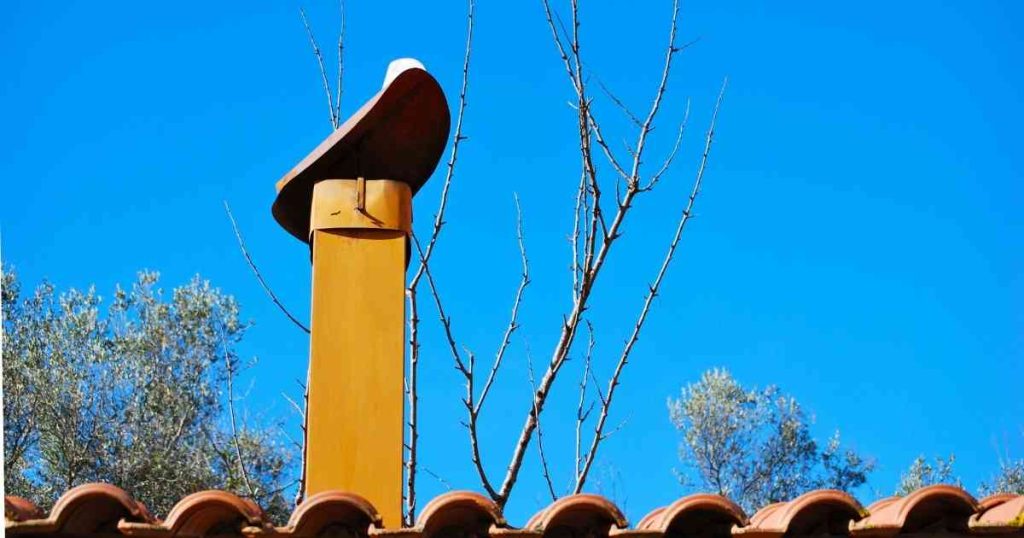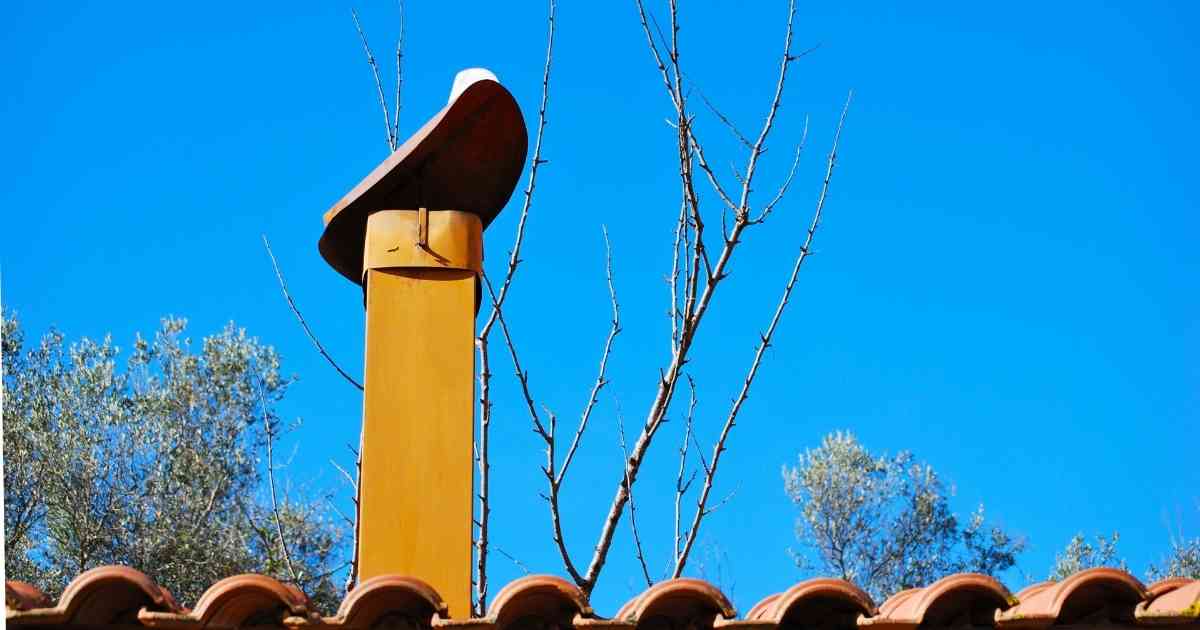Warning: Trying to access array offset on value of type bool in /var/www/html/wp-content/plugins/wp-word-count/public/class-wpwc-public.php on line 123
If you’re planning on setting up a heating system or a fireplace in your home, it is vital to make sure that you select the right kind of chimney or flue for your heating system.
Not every flue is going to sit well with your fireplace, and you can choose from many different kinds of flues in today’s modern age. A copper flue could be a great choice, but it depends on several factors. Let’s look more into when to choose a copper flue.
What Is a Flue?

A flue is a duct, pipe, or aperture mostly found inside a chimney that allows exhaust gases from a fireplace, furnace, boiler, or any heating system to escape outside. Flues are also known as boiler vents and breeches for water heaters.
A flue may sound the same as a chimney, but there is a slight difference.
Are Chimneys and Flues the Same Thing?
Yes and no. They both serve the same purpose but are not the same thing.
A chimney is primarily found in fireplaces and acts as a passageway for byproducts of combustion in the fireplace. It is a vertical passage from a fireplace to the roof that allows hazardous materials and gases to escape into the air.
Some chimneys also have roof caps that prevent rainwater and other things from entering the passageway.
Chimneys are mostly made up of bricks or stones. While from the outside they appear to be made entirely of brick, this is not the case.
Because bricks are not good at resisting raw materials like salt deposits or spalling due to water, even a minute amount of water can lead to brick flaking. The inside walls of the chimney must be covered with sheet rock or any other durable material. This is where flues come in handy.
A flue is an exhaust pipe used to channel smoke, starting from the point of burning towards the opening outside. Flues are made in a wide range of materials, including copper and stainless steel.
Flues can be installed inside chimneys to channel hazardous elements from combustion and allow them to escape outside. They also act as a protective inner layer for brick chimneys.
In addition to fireplaces, flues can be found in furnaces, boilers, and water heaters. Flues are popular because of their ability to conform to any shape depending on the application.
A flue pipe typically goes vertically from the combustion source to the residence’s exterior, but in some situations, these pipes can flow horizontally through the house to the outside.
Types of Flues
There are plenty of different flue types on the market. Let’s have a look at each of those types.
Open Flue
An open flue is made out of a pipe that transports combustion gases from the appliance while fresh air enters via the casing. For this extra air and safe operation, an open flue requires some additional air vents in the room where the appliance is installed.
Rumford Fireplace also follows the open flue principles — it is a fireplace designed to maintain maximum heat inside the room while carrying away smoke through the flue. Its streamlined throat minimizes external turbulence.
Closed Flue
In a closed flue, there is no exchange of air inside the flue and the surrounding atmosphere of the room. Closed flues are mostly used with room-sealed appliances that provide optimal conditions for living.
A closed flue is a good choice for human health because it restricts the flow of harmful components and gases inside the home.
Balanced Flue
Chimneys act as conventional flues in that there is only one tube through which the gases escape. Nowadays, some appliances require a strong supply of oxygen from the outside. To satisfy these requirements, we present to you: the balanced flue.
A balanced flue acts as a two-way tube — one tube pulls the oxygen from outside into the appliance, and the other makes way for waste gases to be released outside the house. This stops an appliance from pulling oxygen from your home, maximizing indoor air quality.
Power Flue
A power flue is powered by a fan that helps push waste air outwards and sucks the outer air that is supplied to the appliance.
A significant benefit of a power flue is that it can be designed in any shape with any length and width.
A power flue can be used with both an open flue and a closed flue. With an open flue, the air would be extracted from outside into the appliance, whereas a closed flue will extract the surrounding room air to push it into the heating system.
False Flue
A false flue does not serve any purpose of ventilation. These are just used for style and aesthetic purposes.
Importance of Flues in Homes

Imagine a fire burning in a fireplace in your home without any ventilation. There would be smoke everywhere and a lack of oxygen. A fireplace or any heating appliance needs a proper ventilation system.
A flue primarily has two functions — it expels waste gases into the air and draws in fresh air for combustion. If the fireplace or any appliance keeps burning for heating purposes, it also releases some gases harmful to humans.
So, to provide a safe environment, the flue plays a vital role in pushing these harmful gases outside and bringing fresh air inside for combustion. Therefore, the flue must be installed correctly for perfect operation.
Installation and Positioning of a Flue
A fireplace’s main purpose is to generate heat and warm up the house. Fireplaces can be huge energy wasters if the flue is not set up correctly.
If the flue is open too wide after the fire is started, the heat will dissipate, and colder air will enter the room through any openings. The flue needs to be adjusted to a position where it channels the harmful gases and smoke outwards and retains the heat.
If you are looking forward to installing a flue at your place on your own, this video depicts the correct way to install a chimney flue kit, along with its accurate calculations for placements. Furthermore, this eHow’s instructions for installing a flue pipe could also come in handy.
Copper in Architecture
Copper has been used as an architectural component since ancient times due to its longevity, resistance to corrosion, dignified look, and ability to be fashioned into distinctive forms and designs.
You’ll find copper in many places around a home, including awnings, gutters and downspouts, chimney tops, and roof vents.
Famous architects like Frank Lloyd Wright and Fran O. Gehry have incorporated copper in some of their most significant works.
Copper Flue
Out of all the flue tiles, the copper flue stands out as the best choice for your chimney or any other ventilation system. Copper is a sustainable material, making it an excellent environment-friendly choice to use as a flue.
It is also very durable and has the ability to be configured into any shape. Copper flue stretchers can be used to add an aesthetic look to your home. Along with style, copper is a useful choice if you want to have a flue pipe with different designs or turns.
Take a look at our copper chimney caps and some beautiful copper cupolas for more ideas to style your house!
One notable characteristic and benefit of a copper flue is that it decreases the amount of downdraft from the chimney. It can also help with adequate ventilation and keeping your home warm.
Copper flues are sturdy, and they can withstand corrosive exhaust from the combustion in fireplaces and other appliances.
Copper chimney caps are a solid choice to protect your chimneys and flues from all kinds of pests and animal intruders.
If you are looking for some great copper chimney caps or pots, we’ve put together a complete collection made with quality craftsmanship. Copper is easy to clean and maintain, which makes it a low-maintenance choice.
The Takeaway
Copper possesses some extraordinary qualities that make it a good and durable choice to be used as a building or construction material.
Flues and chimneys are vital to any heating system, allowing harmful gases to escape and fresh air to enter.
As for the chimneys and ventilation systems for heating appliances, sometimes you want to have a flue pipe that can be molded into different shapes for easy adjustments. The ability of the copper flue to adjust into multiple shapes along with its durability make it a good choice.
It’s important to note that the correct flue pipe installation plays a huge role in good ventilation.
